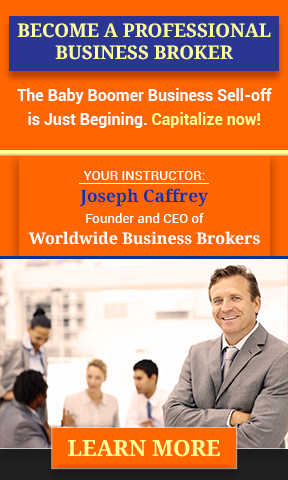Selling a Business to Employees: Part 1
31 July 2023: Selling a Business to Employees: Part 1
Selling a business to its employees can be a very advantageous method of transferring ownership, especially if the seller is concerned about how their business is treated in the future.
Recall last week’s post about the sale of Ben Guttman’s business which, less than a year later, was shut down by the new owners. But selling a business to the employees has numerous other advantages
It can offer tax advantages to the seller. It allows the seller to stay on and exit gradually over a period of time. It saves time insofar as the buyer(s) shows up everyday. It saves many costs of sale, most notably the brokerage commission.
__________________________________________________________________________________
We offer a comprehensive coaching program – both group coaching in our Brokers’ Roundtable℠ community as well as one-on-one coaching – tailored to Realtors, business owners, buyers and anyone interested in valuing, buying or selling a business.
If you’d like to learn more, email me at jo*@*******************og.com
___________________________________________________________________________________
In the U.S., an oft-used method to accomplish this is an Employee Stock Ownership Plan (ESOP). Similar programs exist in other jurisdictions; the Employee Ownership Trust (EOT) in the U.K. is one. Many people believe that only businesses of a certain size use such programs but that’s not true. Nearly every business can utilize it.
 But these plans are not without their own unique costs – i.e., to set up, obtain regulatory approval, administer, etc. – and so Mom and Pop-type businesses may not find them to be very efficient. However, for smaller, even tiny businesses, there’s another way to accomplish essentially the same thing.
But these plans are not without their own unique costs – i.e., to set up, obtain regulatory approval, administer, etc. – and so Mom and Pop-type businesses may not find them to be very efficient. However, for smaller, even tiny businesses, there’s another way to accomplish essentially the same thing.
In this two-part series, we’ll discuss selling to employees. In this Part 1, our topic is ESOPs even though our example is an EOT in the U.K.; a company with dozens of employees. Next week, in Part 2, we’ll tackle a less structured and less costly method. Our example will a tiny, two-employee firm in the U.S.
For the purposes of this discussion, we’ll refer to ESOPs but the discussion applies equally to EOTs and other similar programs in other jurisdictions.
Selling a Business: ESOP or EOT
An ESOP is usually formed to allow employees the opportunity to buy stock in a closely held company, often to facilitate succession planning. ESOPs can be used by small companies, especially those whose employees are committed to the business and the owner has a few years to go before exiting. ESOPs are a great tool for planning an exit and providing the owner with a gradual transition.
Employee stock ownership plans are designed to increase employee investment and employee drive for positive outcomes for the organization. After all, if an employee owns stock in the company, they will likely feel motivated for the company to succeed and for the firm’s value to increase. Further, employees who own stock in the company have an incentive to remain at the company, which could reduce employee turnover.
_____________________________________________________________________________________
Our course, “Learn How to Value and SUCCESSFULLY Sell Businesses“, teaches you how to accurately value and successfully sell businesses.
An employee stock ownership plan (ESOP) is an employee benefit plan that gives workers ownership interest in the company.
Many publicly-traded companies use ESOPs as a corporate-finance strategy to align the interests of their employees with those of their shareholders – because the employees become shareholders through an ESOP.
 For private, closely-held companies – particularly those in the lower to mid-Middle Market – ESOPs give the owners a way to gradually shift the ownership to the employees over time. While providing the benefit of ownership to the employees, it also provides four key benefits to the owners:
For private, closely-held companies – particularly those in the lower to mid-Middle Market – ESOPs give the owners a way to gradually shift the ownership to the employees over time. While providing the benefit of ownership to the employees, it also provides four key benefits to the owners:
- It gives the owners the ability to plan and, to a large extent, control their exit and the transition.
- Because, once enrolled in the Plan, the employees are owners, the company is likely to see more robust performance over time and, thus, be more valuable.
- The owners using an ESOP for an exit strategy know their buyer(s), their capabilities and their commitment.
- An ESOP allows the owners to spread out their tax liabilities over time.
Benefits to the Business
Of, course, ESOPs offer other benefits, as well.
First, an ESOP gives the the company’s vendors, customers and lenders less worry as a transfer of the business to the employees provides a sense of continuity. Imagine that you are one of the company’s vendors or customers and were told by the business’ owners that the company was about to be sold. Would you feel a greater sense of uncertainty if the sale was to an unknown party or to the company’s employees who’ve served you so well for many years?
The Brokers Roundtable℠, the online community for business brokers, business owners, Realtors and others in the business-for-sale industry, will mark the end of its 90-day Founders Membership period on July 31st. Members who join prior to August 1, enjoy a lifetime discounted quarterly membership fee of US$115. Beginning on August 1, the membership fee will be increased to $175 every three months.
Created and hosted by Worldwide Business Brokers, The Brokers Roundtable℠ provides training, webinars, and connections with professionals from certified business appraisers, acquisition lenders, accountants, franchise specialists, transaction attorneys and business brokers in nearly a dozen countries.
Join live interviews and Q&As with industry professionals, weekly Office Hours to get questions answered and connect to the talent you need to sell, buy, broker or finance a business. You can sign up for The Brokers Roundtable℠ here.![]()
That was one of the considerations in the case in the transition our colleagues in the U.K. reported.
 The second-generation owners of a half-century old supplier of construction equipment affected the sale of their business to its employees using an EOT.
The second-generation owners of a half-century old supplier of construction equipment affected the sale of their business to its employees using an EOT.
This approach was facilitated by the fact that a strong management team was in place and most of its dozens of employees were long-term. The EOT provided a way for the sellers to gradually withdraw (easing the inevitable letdown that often follows a transition). Because the sale price will be paid over a number of years, the sellers have effectively created an annuity. And spreading out those payments over time provides a way for the seller to minimize the tax hit.
Finally, the way the transition is structured allows the sellers to continue to benefit from the business’ growth over the years of the transition. Since ESOP shares are part of the employees’ compensation package, plan participants are more likely to stay focused on company performance and value appreciation.
The Bottom Line
Using an ESOP or EOT provides motivation, stability and continuity for staff, vendors and customers, and ensures the business continues in the way its sellers want it to.
How to structure the employees’ vesting period – usually the proportion of shares earned for each year of service – and how employees can get access to their proportion of ownership are topics beyond the scope of this blog post and should be addressed with an ESOP professional.
Of course, all of this assumes that the owners of the business have been planning for their exit and that there are a number of years between the set up of the ESOP and the owners’ exit.
Next week, in Part 2, our example will be of a tiny firm the sale to one of its two employees we advised on.
I’d like to hear from you. What topics would you like me to cover? How can we tailor these posts to be more useful to you and your business. Let me know in the comments box, below, or email me at jo*@*******************og.com.
If you have any questions or comments on this topic – or any topic related to business – I’d like to hear from you. Put them in the comments box below. Start the conversation and I’ll get back to you with answers or my own comments. If I get enough on one topic, I’ll address them in a future post or podcast.
I’ll be back with you again next Monday. In the meantime, I hope you have a safe and profitable week.
Joe
Searching For…
NOTE TO READERS: This is the final post containning our “Searching For…” feature. We’re moving it to our online community, The Brokers Roundtable℠ and it will appear there exclusively beginning 1 August.
A U.S.-based “acquisition platform” has contacted us seeking software as a service (SaaS) companies with at least US$500,000 in annual recuring revenue.
If any of you know of something that might fit, please let me know.

#business #businessacquisition #sellabusiness #becomeabusinessbroker #businessbrokering #businessvaluation #MergersandAcquisitions #buyabusiness #sellabusiness #realtor #realestateagents
The author is the founder, in 2001, of Worldwide Business Brokers and holds a certification from the International Business Brokers Association (IBBA) as a Certified Business Intermediary (CBI) of which there are fewer than 600 in the world. He can be reached at jo*@*******************og.com

